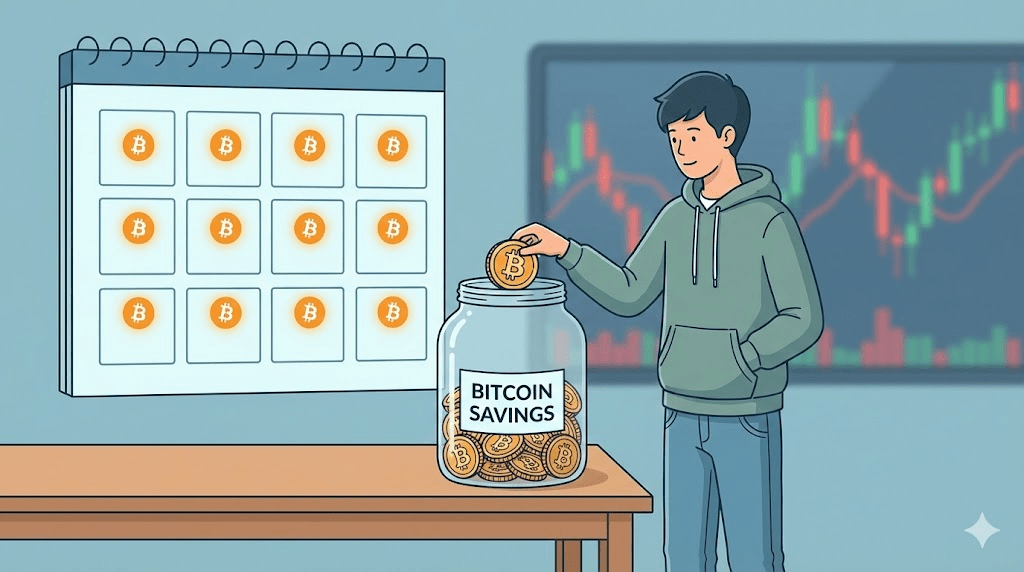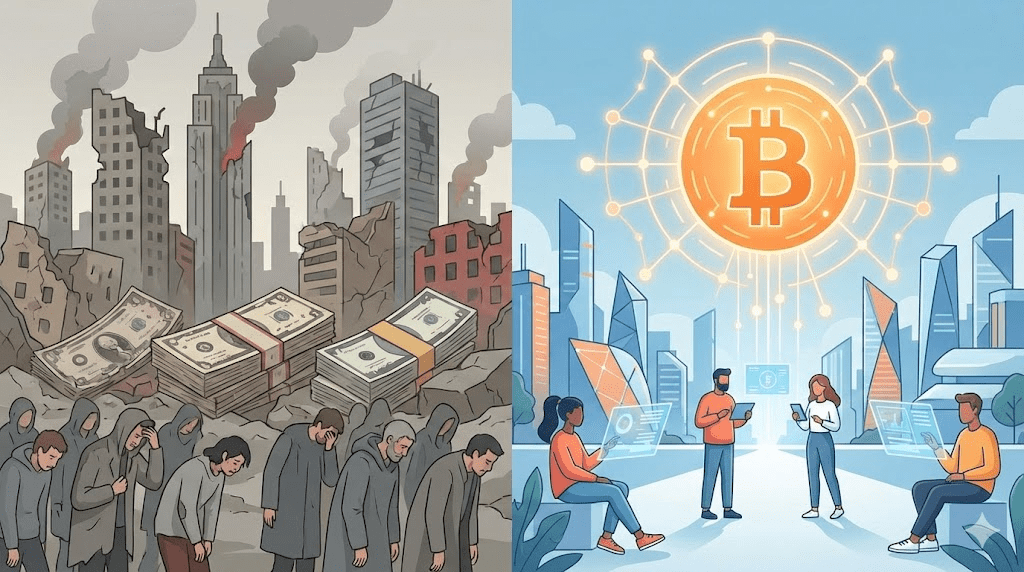For ordinary people wanting to participate in the crypto world, the most reliable way is not to go all in or enter contracts, but to steadily invest in mainstream coins.
Even if you are a skilled trader, you should still set aside a portion for long-term holdings, continuously investing in Bitcoin and Binance Coin.
Many people have traded for many years, yet they cannot clearly explain 'what is blockchain, what is Bitcoin', let alone truly establish long-term faith.
This entire set of 'Recharge Faith Series' is designed to fill this gap. Today, leveraging Michael Saylor's speech in Prague, we understand from another perspective: why Bitcoin is considered close to a 'perfect currency', and what this means for our long-term investment and holding mindset.
One, Bitcoin: the imagination of 'the perfect currency' after the collision of science and economics.
Saylor said from the start: Bitcoin is a 'singularity', a collision of science and economics.
In the past few thousand years, the currencies humans have used include:
Shells, tobacco, glass beads.
Copper, silver, gold.
Various banknotes and digital currencies.
These things have a common characteristic:
It is either not transparent in total supply, easily confiscated, or constantly being swallowed by inflation.
In his view, Bitcoin is the first to give 'currency' several characteristics:
Total supply is clear: 21 million coins, no one can casually increase it.
Rules are written in code: no one can temporarily change the game rules.
Globally open: anyone with internet access can participate.
Decentralized: it is not determined by any country or company.
When you put it together with those currencies in the real world that will be slowly diluted by inflation, it acts like a 'static measuring stick'.
It’s not that Bitcoin is rising, but rather that fiat money is 'losing value'.
For ordinary people like us, the real meaning of this sentence is:
If what you hold long-term is something constantly diluted by inflation and overissuance, trading will just be fussing around on a sinking ship.
If you bind your life to 'harder assets', no matter how ordinary, time will gradually stand by your side.
Two, 'driven by chaos' assets: why Bitcoin bets on entropy.
Saylor made a very extreme analogy.
He asked:
Putting money in the bank is essentially lending it to a country.
Buying stocks is essentially betting on a management team and an industry.
Buying property is essentially betting on a certain city and its system.
Buying art is essentially betting on a cultural sphere.
These things share common weaknesses:
War, coups, regulatory changes, and industry technology disruptions can all cause them to depreciate rapidly or even disappear.
He gave an example from pre-war Europe:
If you could choose any piece of land, any company, any currency, and 'the money deposited by all warring countries in Swiss banks', which would be more stable in the end?
War is a scene of 'chaos being accelerated'.
Most buildings will explode, companies will collapse, currencies will fail, contracts will be torn apart.
But that safe and neutral 'asset black hole' will become even more important because of everyone's panic.
In his eyes, Bitcoin is such an asset that 'benefits from chaos'.
The more chaotic the government, the more people want to transfer a part of their wealth to the blockchain.
The more currency is overissued, the more people look for scarce assets.
The more frequently the financial system has problems, the more people believe in 'decentralized ledgers'.
Entropy will only increase, chaos will only grow. This is his underlying logic for being bullish on Bitcoin's long-term performance.
For ordinary dollar-cost averagers, this can be converted into a very simple statement:
You don’t need to predict which country will definitely be the strongest in the next 30 years.
You only need to put a part of your long-term assets on a layer that 'any country finds it difficult to destroy'.
Three, Bitcoin is the first thing you can 'truly own' in your life.
Saylor put forward a very sharp point:
What you think you own is actually mostly 'temporarily allowed for you to use by others'.
For example:
Houses may be expropriated or heavily taxed.
Companies may be regulated, fined, or nationalized.
Deposits may be slowly eroded by inflation 'taxes', or even locked within borders by capital controls.
Even without 'man-made theft', time itself is a great killer:
Industries may become outdated.
Regions may decline.
Technologies may eliminate existing business models.
In his eyes, the only thing that can 'truly belong to you' is the Bitcoin for which you control the private keys.
It is an asset in the form of information.
As long as you remember the keys, even if you are in any corner of the world, it will be hard for others to take it away.
The longer the time, the more chaos, it may actually become scarcer.
This does not encourage everyone to 'all in', but is meant to remind:
For ordinary people, it is necessary to put a part of long-term assets in this 'anti-seizure, anti-inflation' layer as a base for family assets.
For users in the Binance ecosystem, you can understand this as a hierarchical structure:
Outermost layer: money for daily consumption and short-term trading.
Middle layer: stablecoins, moderately conservative investments, etc.
Innermost layer: your 'faith fund' that you truly want to leave for your future self, such as Bitcoin and Binance Coin that you invest in long-term.
Every layer may have risks, but the closer you are to the core, the less you should frequently touch it.

Four, everyone meets Bitcoin at 'the price they deserve'.
Saylor has a saying that many people quote:
'Everyone buys Bitcoin at the price they deserve.'
Behind it is actually a discussion about mindset.
Many people's first reaction upon seeing Bitcoin is: 'Isn't this a scam?' 'It will go to zero.'
When it rises to a certain level, they then say: 'It has risen too much, it's unsafe, wait for a pullback.'
When it rises again, another batch of people continues to repeat the same lines.
He himself admitted that he publicly spoke bearishly about Bitcoin in 2013.
Years later, looking back, the prices back then were simply 'a godsend opportunity'.
For us, the meaning of this sentence is not 'you deserve to buy high', but:
When can you overcome your prejudice against new things,
When are you willing to spend time understanding its principles,
When can you let go of the obsession of 'wanting to catch the bottom' and truly start a long-term layout,
This time point is largely determined by your cognition and mindset.
The benefit of dollar-cost averaging lies precisely in:
It does not require you to catch the 'perfect low point'.
You acknowledge that you do not know the short-term price.
But you believe in long-term logic and are willing to use time to smooth costs.
If you have already missed the first few rounds, rather than regretting it, ask yourself:
Can I start from this moment, with a reasonable position ratio, buy a little each month or week, rather than continue hesitating for ten years?
Five, 'only use money you can afford to lose', how to understand it.
In traditional investing, there is a saying often heard:
'Only invest with money you can afford to lose.'
Saylor mentioned the opposite in his speech:
He would rather say 'buy Bitcoin with money you can afford to lose.'
Literally, it sounds a bit dangerous, but he doesn’t mean for you to go all in.
Rather, he emphasizes an attitude:
Don't treat Bitcoin as 'casino chips'.
Don't casually try it with the mindset of 'just playing around, if I lose it's fine'.
You should treat these assets seriously, just like a part of 'your future retirement money and children's education fund', study seriously, and manage seriously.
As rational ordinary people, we can rewrite this sentence into a healthier version:
First, plan your position:
Do not use money needed for living expenses to buy.
Do not borrow money, do not use leverage, do not overdraw with credit cards.
Use a portion of your long-term savings that will not affect your quality of life in the coming years.
Then study seriously:
Understand the basic principles, at least be able to explain 'what Bitcoin is and why it is scarce'.
Learn about the safety knowledge of mainstream exchanges and wallets.
Finally, hold long-term:
Consider this part as an asset of 'ten-year level', rather than a short-term gamble for the next few years.
This way, you avoid the 'gambler's impulse' while truly respecting your long-term assets.
Six, learn to 'think in Bitcoin': see the opportunity cost clearly.
Saylor repeatedly emphasizes one point:
If Bitcoin increases by several dozen points on average in a certain period, then this is your 'opportunity cost' during that period.
He criticized many enterprises and institutions:
While saying 'optimistic', at the same time lending money to others and making complex investments, with returns far lower than holding Bitcoin long-term.
Some even take assets that should be allocated long-term to chase those 'seemingly smart, but actually very complex and opaque' strategies.
For individual investors, this can be translated into several simple questions:
On the premise that you already recognize Bitcoin's long-term value,
are you still locking your money in complex and opaque products for just a few points of annualized return?
Are you reducing your long-term foundation for a possible 'short-term opportunity'?
Thinking in Bitcoin does not mean you can only hold one asset,
but reminds you to always ask yourself:
In the case that I already believe 'Bitcoin and a few mainstream assets have long-term value',
Is this operation I am doing really enhancing my long-term win rate, or sacrificing long-term for a bit of short-term excitement?
This will slowly change the way you view risk and return.

Seven, do not try to 'remake Bitcoin', learn to 'be transformed by Bitcoin'.
Saylor shared a classic analogy:
Some people are like holding a PhD to teach an eagle how to fly.
In his eyes:
Bitcoin is a complex system formed by countless developers, miners, nodes, and users collectively playing the game.
It has been brutally 'stress-tested' by the real world for over a decade.
Any individual or small team that thinks 'I can change the rules for the better' is very likely underestimating the complexity of this system.
For us ordinary people, a more practical point is:
Instead of chasing 'the next Bitcoin' or 'a smarter economic model' every day,
you might as well first understand this ready-made, already verified mechanism of Bitcoin,
and based on that, understand the strengths and weaknesses of other projects.
Many stories of failure are essentially:
Before truly understanding Bitcoin, they have already put most of their energy and chips on more complex and fragile things.
Eight, spread Bitcoin with 'love' rather than 'hate'.
At the end of the speech, Saylor reminds all Bitcoin supporters:
Many people attack Bitcoin not because it is 'bad', but because they 'do not understand, do not need it'.
When a person lives in an apparently stable environment, he temporarily has no need to 'be forced to understand'.
What often truly makes him understand are: inflation, capital controls, asset seizures, financial crises...
If you discuss with them in a mocking or attacking manner, it will only make them more resistant.
On the contrary, if you:
Patiently explain the principles,
Respect their concerns,
Tell them they can start with a very small position and a very slow pace,
So when they one day personally feel the limitations of the existing system, it will be easier to remember what you said initially.
This is equally applicable to those of us who write popular science and produce content on the platform:
You don’t need to push Bitcoin and Binance Coin with a tone of 'calls, getting rich, stimulation, opposition'.
Using a calm, friendly, and genuine tone to clearly explain the principles and risks can attract truly long-term readers and partners.
Nine, summary: first understand your chips, then talk about ups and downs.
If this speech could be compressed into a sentence for ordinary investors, it would probably be:
First, understand what you are really holding, then care about whether it rises or falls today.
Bitcoin is called 'the closest thing to a perfect currency' not because it is without risk,
but because:
It makes monetary rules clearly presented to everyone for the first time.
It provides a relatively stable 'time storage device' in chaos and uncertainty.
It gives ordinary people the opportunity to bind a part of their long-term lives to an asset that is not easily influenced by a single country or institution.
As for what we should do,
Don't gamble, don't go all in, don't use leverage.
Choose a few truly mainstream assets with long-term value, like Bitcoin and the core assets of leading public chains.
Combine your income and risk tolerance to formulate a dollar-cost averaging plan that you can stick to for many years.
In every sharp fluctuation, use your understanding of the principles to calm your emotions, rather than being led by emotions to move your positions chaotically.
You don't need to predict every market move.
What you need to do is let time and truly valuable long-term assets stand by your side, and then patiently live through many years ahead.




